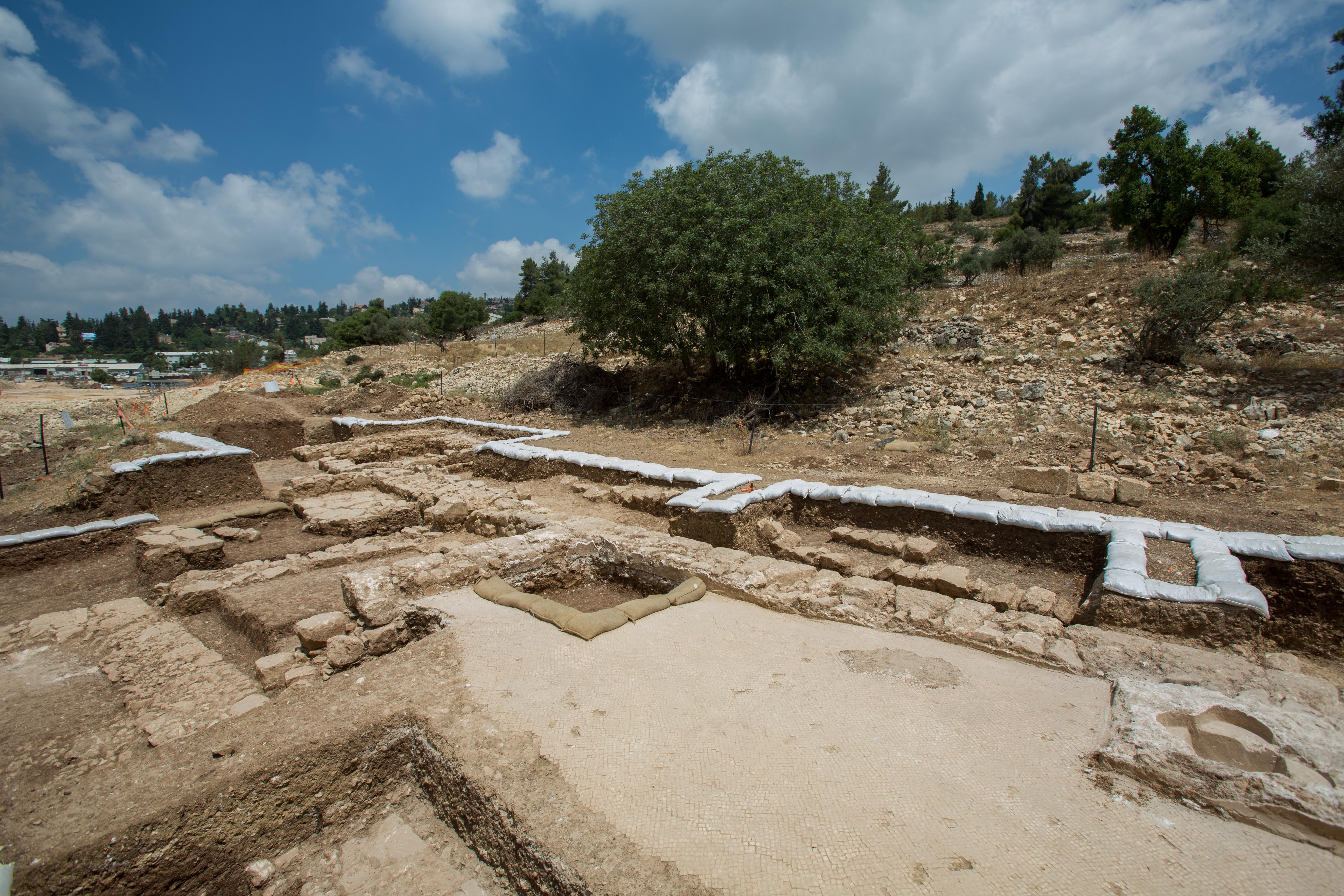Rare menorah-carved capital found near Jerusalem is unveiled for Israel's Independence Day
Researchers think capital was placed in Byzantine structure in 'secondary usage'

A unique, 1,500 year-old stone capital with a menorah design found on the site of a Byzantine-era church building will be put on display for the first time in honor of Israel’s Independence Day, according to the Israel Antiquities Authority (IAA).
The unusual capital was first discovered in Motza, just northwest of Jerusalem, in 2020. As is so often the case, it was in the process of digging in preparation to build something new that the treasure was uncovered.
The rare limestone capital was unearthed during IAA excavations, undertaken prior to the construction of a new bridge at the entrance of Jerusalem. However, the find has amazed experts who described it as “one of a kind” in a statement from the IAA.
"While Corinthian capitals with smooth leaves were common throughout our region from the late Second Temple through Byzantine periods, the capital discovered at Motza exhibits truly distinctive features,” according to Dr. Orit Peleg-Barkat from the Hebrew University of Jerusalem, who specializes in ancient architectural decoration.
“Despite being skillfully crafted, it appears to be the work of an artisan less familiar with architectural conventions prevalent in urban public structures. Most significantly, the upper section – traditionally adorned with a floral motif – instead features what resembles an eight-branched menorah,” he added.

The impressive capital is square with a menorah emblem on each of the four sides. Experts from the IAA and the Hebrew University in Jerusalem have been studying the capital from both a scientific and historical point of view.
“This is particularly intriguing because seven-branched menorahs typically appear on capitals from synagogues of the late Roman and Byzantine periods, such as those found at Capernaum and Caesarea. The absence of any evidence suggesting a synagogue at this site raises questions about the capital's original purpose and context. It's possible the craftsman intended to carve a conventional flower design but, due to his limited familiarity with standard models, created something that bears a resemblance to a symmetrical eight-branched lamp,” he said.

Dr. Uzi Ad and Anna Eirich, excavation managers on behalf of the IAA also expressed amazement and perplexity about the find, saying in a statement, “It seems this capital stood atop a column in a magnificent building or on a street, in a late Roman period settlement here (2nd-4th Century CE). From its local context and finds, this settlement was apparently populated by descendants of Roman army retirees. If so, what was a capital with a menorah decoration on it doing here of all places – a distinct Jewish symbol? This is a true conundrum,” they said.
The ornate capital was discovered among the remains from the Byzantine period (6th-7th Century AD), in the remains of rooms next to a church.
“We have a lot of questions: How did it get there? What is a menorah doing in a Byzantine site? A Christian site?” asked Dr. Uzi Ad, marvelling at the quality and significance of the artifact.
Initially the archeologists didn’t register the menorah design, because it was resting upside down. As soon as they turned over they instantly recognized what it was. Researchers believe the rare architectural feature already existed and was placed in the Byzantine structure in what is termed “secondary usage," which is to say it was designed and used within an even older structure beforehand.
This will be the first time a capital of this sort, bearing the image of a menorah lampstand, a recognizably Jewish symbol found in the outskirts of Jerusalem will be displayed in public.
It can be seen at the Jay and Jeanie Schottenstein National Campus for the Archaeology of Israel in Jerusalem, as part of Israel’s Independence Day events.
“There is no more appropriate time to reveal this find to the public than in these very days of celebrating our identity as a nation. The connection to roots and to values is the source of our strength,” said Eli Escusido, Director of the IAA.
Registration for tours – on the Israel Antiquities Authority website

Jo Elizabeth has a great interest in politics and cultural developments, studying Social Policy for her first degree and gaining a Masters in Jewish Philosophy from Haifa University, but she loves to write about the Bible and its primary subject, the God of Israel. As a writer, Jo spends her time between the UK and Jerusalem, Israel.














